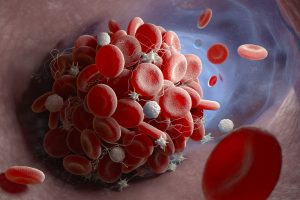
Your veins and arteries are major players in heart health. When these blood vessels aren’t functioning properly, bad things can happen. Blood clots in the coronary arteries can trigger a heart attack. When they happen in large veins elsewhere in the body, it can lead to a medical emergency.
The issue is that they are very difficult to identify. How are you supposed to know your blood is polling or clotting on a vein somewhere?
There are some symptoms, but they aren’t necessarily exclusive. They include:
- Throbbing or cramping in the affected area
- Redness/warmth in your leg or arm
- Sudden breathlessness
- Sharp chest pain (may worsen when you inhale)
- Cough
Vein issues are most common in the legs. Venous insufficiency occurs as blood struggles to work against gravity on its way back to your heart, and clots and varicose veins can occur.
There are more severe issues at play, however. Venous thromboembolism (VTE) are blood clots in large veins. These maybe called “vein attacks.” Thankfully, the same things that can prevent heart attacks are useful for keeping veins healthy.
Keeping active to avoid immobility is one of the best things you can do for your heart. It could be even more important to ensure your veins are functioning optimally.
When you exercise for as little as 30 minutes per day it helps prevent blood from clotting and helps push it back up though your veins. Movement also helps keep veins relaxed and loose to encourage better circulation.
Not smoking, eating a healthy diet, staying hydrated, and limiting alcohol intake are other lifestyle factors that can prevent blood clots. But activity might be the best.
Remembering to do a little activity each day to keep your veins stay healthy can help reduce the risk of blood clots and other trouble in the venous system. It’s rarely to late to experience the benefits of more movement.